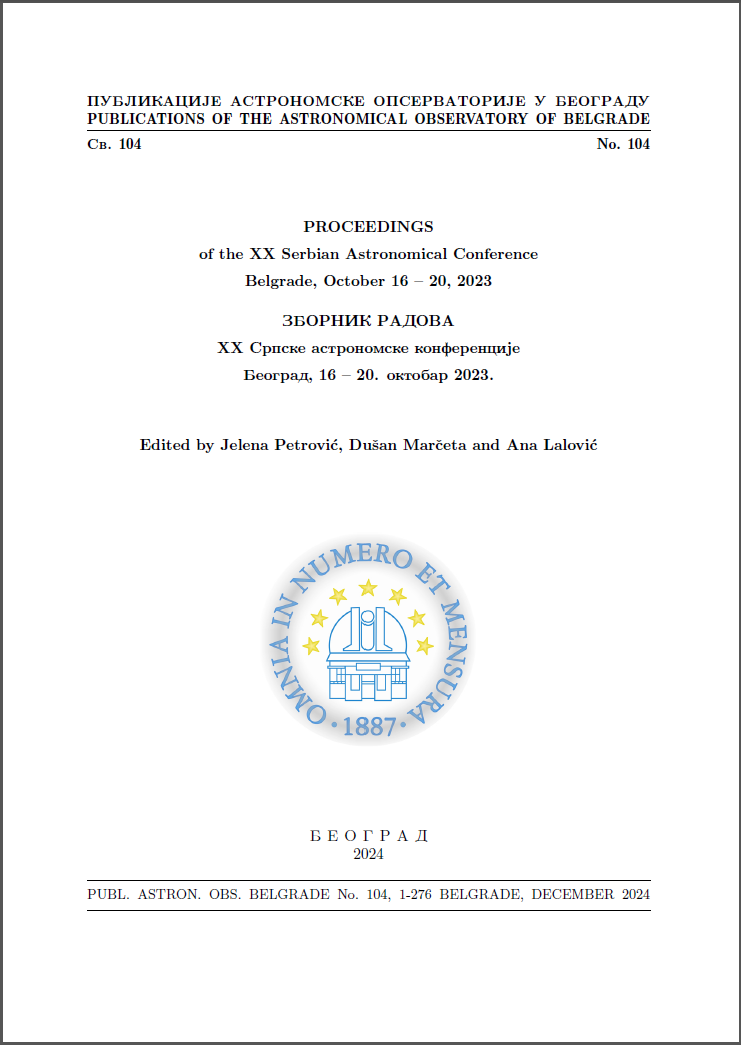SUPERNOVAE AS TRACERS OF THE STRUCTURE AND EVOLUTION OF THE SURROUNDING UNIVERSE
Petr Kurfürst.
Publication
PUBLICATIONS OF THE ASTRONOMICAL OBSERVATORY OF BELGRADE104, Page 19-28, https://doi.org/10.69646/aob104p019
PROCEEDINGS of the XX Serbian Astronomical Conference, Belgrade, October 16 - 20, 2023, Edited by Jelena Petrović, Dušan Marčeta and Ana Lalović
Published by: Astronomical Observatory, Volgina 7, 11060 Belgrade 38, Serbia
Published: 15. 12. 2024.
Abstract
Abstract. The impact of mass lost from hot stars in general, including supernovae (SNe), as probably the leading contributor, has a direct impact on the evolution not only of stars but the entire universe. We study the interactions of expanding supernova (SN) envelopes with aspherical dense circumstellar medium (CSM) of various morphologies, including circum- stellar disks, bipolar lobes, or overdense layers of colliding ejected matter in binary systems. Many possible mechanisms can lead to wild eruptions of vast amounts of matter from po- tential SNe progenitors for a long time or shortly before the SN explosion. These effects are manifested by irregularities and bumps in light curves and asymmetries in spectra. Since massive stars usually end their lives as SNe, they appear to be candidates for neutron stars, black holes, gamma-ray bursts, or magnetars; understanding the behavior of the processes shortly before and after the SN explosions and their impact on the surroundings will help us understand how the stars become precursors to these exotic and interesting stellar objects.




